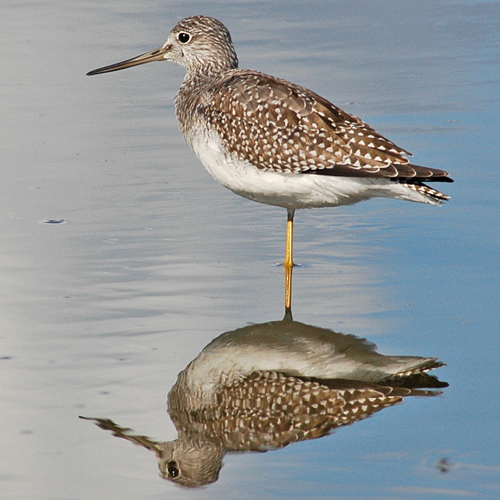Greater Yellowlegs are Common in Western Washington from Mid March-Mid May and again Late June-October.
Habitat
Greater Yellowlegs wintering and migration habitats are more general; they can be found in many fresh and saltwater wetland habitats, including open marshes, mudflats, estuaries, open beaches, lakeshores, and riverbanks. In comparison to Lesser Yellowlegs, Greaters are typically found in more open areas, on larger bodies of water, and on more extensive mudflats.
Behavior
Greater Yellowlegs are less social than many shorebirds, and small flocks form during migration. Outside of the breeding season, most foraging takes place in shallow water. They often feed actively, running after fish or other fast-moving aquatic prey. Greater Yellowlegs swing their heads back and forth with the tips of their bills in the water, stirring up prey, but are less likely to use this foraging technique than are Lesser Yellowlegs. The Greater Yellowlegs bobs the front half of its body up and down, a characteristic behavior of this genus. Greater Yellowlegs are wary, often the first species to sound an alarm when a perceived threat approaches. Greater Yellowlegs are known for their piercing alarm calls that alert all the birds in the area. Their flight call consists of a series of 3 or 4 notes.

No comments:
Post a Comment